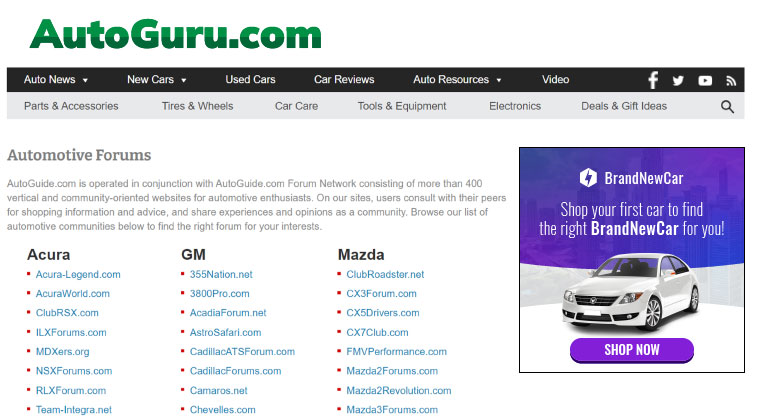How To Build Long-Tail Keywords That Convert For Your Ad Campaigns

Focusing on long-tail keywords in your ads is one way to boost your online ad campaign’s performance.
With 70% of search traffic coming from long-tail searches, these specific searches ensure the right people see your ads while lowering ad costs. Their specificity filters out people searching for generic results and attracts people closer to making a purchase decision.
Using long-tail keywords effectively is fantastic for your ad campaigns! But how do you find and create effective long-tail keywords for your ad campaign?
Key Differences Between Long-Tail and Generic Keywords
Long-tail keywords are search queries that get fewer searches per month compared to their more general ‘head’ keywords.
However, they are also more specific, face less competition and usually convert better than broad keywords. People use longer search queries when they’re clearer on what they want to search for and closer to making a purchase decision.
For example, if you’re researching online for a new car
If you know little about cars, you’ll want to start broad to understand the product category Here, the short-tail keyword “automobile brands” will suit your search intent.

But if you’re more ready to buy an automobile and are narrowing down your options, you may search “offers on cheap cars near me” for more relevant information.
As you can see, the user intent and behavior of the two searches are different.
Short tail keywords are perfect for general searches and usually cater to people still in the awareness stage of their purchase journey.
In contrast, longer phrases are more specific and used by people who have a clearer idea of what they’re looking for. Fewer people bid on long-tail search terms, raising your chances of dominating the search results that query and improving your conversion rates
There’s a place for both types of keywords in your ad campaign keyword strategy. It’s best to understand the user intent of your campaign, know what terms your target customer will use and personalize your ad strategy accordingly.
Now that we’ve gone over the differences and benefits of long-tail keywords let’s discuss how to choose the right keywords for your ad campaign.
How to Build The Best Long-tail Keywords for Your Ad Campaigns: A Step by Step Guide
Step 1: Research user intent and topics
When building your long-tail keyword list, you’re looking for keywords that signal high purchase intent.
Not all long-tail keywords signal high purchase intent!
Going back to the automobile example, the search phrase “how much should i budget for a car” signals informational intent, where the person is still researching about their purchase decision and not ready to buy.
Compare these results to the phrase “car sales near me”, which signals a buyer who’s more ready to purchase.
Hence, it’s crucial to understand the people searching for your products and services.
Refer to your buyer personas to understand how to angle your products to them. Think about their pain points and what your product offers to help them address these pain points.
Other actionable methods to gather information on user intent:
- Get on a call with existing customers or speak to your sales team
- Create a quick survey to email to previous buyers
- Search on forums like Reddit, industry forums and look out for groups where your target audience frequents.
- Look at your competitors to see the keywords they’re targeting for inspiration.
Step 2: Select and filter potential long-tail keywords
With your audience research in hand, let’s go through how to build your keyword list in ReverseAds free Keyword Search tool.
1.Compare: Find the monthly search volume based on a keyword’s geo-location or determine worldwide search trends. Use this to compare your keywords against your competitors and discover potential keyword opportunities.
2.Suggested: Discover niche long-tail keyword results, along with their keyword difficulty and monthly search volumes here. Choose keywords with four or more words and lower keyword difficulty.
3.Competitor: Bidding against a competitor? Input your competitor’s domain name here to find an estimate of their overall traffic numbers, engagement, sources and which keywords they’re bidding on while building out your campaigns.
Once done, filter the keyword results, looking for keywords that:
- Have low to moderate keyword difficulty (anywhere between 30-70%, depending on your budget and product )
- Contain high search volume to be worth your investment, depending on your product category, but keywords with a search volume of 100-1000 searches per month is a good start.
- Matches the user intent you’re targeting with your ad campaign
- Sound natural
Tip: ReverseAds free Keyword Search tool gives you complete visibility on keyword bid price comparison between Google Ads and ReverseAds for you to make an informed decision. Try the tool here!
Step 3: Integrate the long-tail keywords into your ad campaigns
Once you’ve filtered your list, it’s time to put your new keywords into action.
Sort and group your long-tail keywords by themes that are specific to the value proposition of the product or service you’re advertising. For example, if you’re building a long-tail keyword campaign on automobile brands, some grouping categories you can consider:
| Grouping Category | Long-tail keywords |
|---|---|
| Specific car brands searches | *New BMW models for sale *Toyota convertible for sale near me |
| Urgency/ time sensitive | *Book a Toyota test drive *Toyota test drive appointment |
| High purchase intent/signals of exact budget | Used cars for sale near me under 10000 |
Once you’ve built out a structure, sorted your keywords into themes and optimized your ad copy around your keywords, make your campaign live! Keep referring back to your Search Terms report to monitor the performance of your existing keywords while discovering new potential long-tail keyword opportunities.
Tip: ReverseAds’ patented keyword assignment algorithm helps you personalize your advertising to your buyer’s unique intent and behavior. This helps marketers to better manage the risks and costs of long-tail keywords. Combine the smart use of technology with the tips above to enhance your chances of a successful advertising campaign.
Long-tail keyword campaigns made simple with ReverseAds
Now that you know the process of creating long-tail keywords for your ad campaigns, why not start optimizing your ad campaigns with some appropriate long-tail keywords?
Use ReverseAds’s free Keyword Research tool to help you discover keyword opportunities, understand what your competitors are ranking for and more! Try the tool out here.







